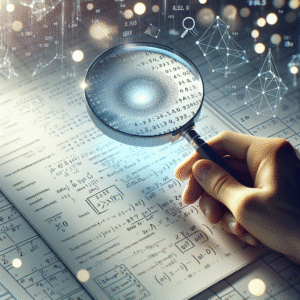Have you ever wondered how much of your personal information is out there in the digital world? In today’s technology-driven society, understanding personal data protection has never been more crucial. As I navigate through this topic, I want to share insights and information that can help both you and me in safeguarding our personal data.
What is Personal Data?
Personal data refers to any information that can identify an individual, either directly or indirectly. This includes names, addresses, email addresses, phone numbers, and even online identifiers like IP addresses or cookie data. It’s fascinating—yet somewhat unsettling—to think about how much personal data we generate in our daily lives, from social media interactions to online purchases.
The Importance of Protecting Personal Data
Protecting personal data is vital for several reasons. Firstly, it helps maintain our privacy. In an age where information is readily available, I want to make sure that my personal details are kept private and secure. Secondly, protecting my data can prevent identity theft. The implications of having my identity stolen are severe, ranging from financial loss to damage to my reputation.
Types of Personal Data
There are several types of personal data that I should be aware of—specifically, they can be categorized into two main types:
| Type | Description |
|---|---|
| Personally Identifiable Information (PII) | Data that can be used to identify an individual directly, like name and Social Security number. |
| Non-Personally Identifiable Information (Non-PII) | Data that does not directly identify me but can be aggregated to form insights about my behaviors, like browsing history. |
Recognizing these categories helps me understand the risks associated with both types of data.
Understanding Data Protection Laws
As I learn more about personal data protection, I find it essential to understand the laws designed to safeguard our information. Many countries have established regulations to protect individuals, and I can benefit from being aware of these.
General Data Protection Regulation (GDPR)
The GDPR is a significant piece of legislation in the European Union that aims to enhance personal data protection. Although it’s tailored for EU residents, it has global implications, impacting how businesses handle personal data worldwide. Under this regulation, I have rights over my personal data, including the right to access it, rectify any inaccuracies, and even request deletion.
California Consumer Privacy Act (CCPA)
In the United States, the CCPA is gaining attention as a robust framework for protecting personal data. It provides rights similar to those outlined in the GDPR, specifically for residents of California. Through the CCPA, I can understand what personal information is being collected about me and how it is used.
Common Threats to Personal Data
With so many threats targeting personal data, I need to be vigilant. The digital landscape can be a minefield of risks that I may encounter daily.
Phishing Attacks
Phishing is one of the most common threats that put my personal data at risk. This occurs when malicious actors disguise themselves as trustworthy entities to trick me into providing sensitive information. I’ve received deceptive emails and messages that look genuine, but I now know better than to click on those links without confirming their authenticity.
Data Breaches
Data breaches occur when unauthorized individuals gain access to personal data stored by organizations. High-profile breaches have occurred in recent years, affecting millions of people, including myself. The fallout from these breaches can be severe, leading to identity theft and financial fraud.
Malware and Ransomware
Malware and ransomware are increasingly prevalent, designed to infiltrate systems and either steal my data or hold it hostage for ransom. I’m now more cautious about the websites I visit and the software I download to minimize the risk of falling victim to such attacks.
Tips for Protecting My Personal Data
To keep my personal data secure, I’ve found several strategies that can help me stay vigilant and proactive.
Use Strong Passwords
Creating strong passwords is the first line of defense in protecting my accounts. I use a combination of uppercase letters, lowercase letters, numbers, and symbols. It’s also wise to change my passwords regularly and avoid using the same password for multiple accounts.
Enable Two-Factor Authentication
Two-factor authentication (2FA) adds an extra layer of security to my accounts. Even if someone manages to get hold of my password, they would still need a second form of verification to log in. This simple step gives me peace of mind.
Be Cautious of Public Wi-Fi
When I connect to public Wi-Fi networks, I’m putting my personal data at risk. Hackers can easily intercept information transmitted over these networks. Whenever possible, I use a Virtual Private Network (VPN) to create a secure connection.
Regularly Monitor My Accounts
Keeping an eye on my accounts can help me catch any unauthorized activity early. I regularly check my bank statements and online accounts to ensure everything looks as it should.
The Role of Organizations in Data Protection
Organizations that collect personal data also have a responsibility to protect it. It’s an evolving landscape, and I’ve taken note of how companies are changing their practices to enhance data security.
Transparency in Data Collection
More businesses are adopting transparency in their data collection practices. I appreciate when organizations inform me about what personal data they collect, how they use it, and with whom they share it. This transparency builds trust.
Data Minimization
Data minimization is a principle advocating for the collection of only the necessary personal information needed for a specific purpose. By adhering to this principle, organizations can reduce the risk of exposing excessive data in case of a breach.
Enhanced Security Measures
Organizations are investing in enhanced security measures, like encryption and regular security audits, to protect the data they hold. I feel more secure knowing that companies take these precautions seriously.
The Future of Personal Data Protection
As technology advances, I think a lot about where personal data protection is headed. Emerging trends reveal both challenges and opportunities that we’ll have to navigate together.
Artificial Intelligence and Data Privacy
Artificial intelligence (AI) is transforming how data is handled. While AI can streamline processes, it also poses unique challenges concerning data privacy. I recognize that AI systems can inadvertently expose personal data if not programmed and regulated properly.
The Rise of Decentralized Identity Systems
Decentralized identity systems are gaining traction, allowing me to have more control over my personal data. With my identity managed on a blockchain, I could share only specific pieces of information without exposing my entire identity. This shift could revolutionize how we approach data protection.
Increased Advocacy and Awareness
As public awareness about personal data protection grows, I see an encouraging trend towards advocacy for stronger regulations. Movements in various countries aim to push for more stringent data protection laws, urging organizations to prioritize privacy.
Investing in Personal Data Protection
To further secure my personal data, I believe that investing in the right tools and practices is essential. Here are a few areas where I can make a sound investment.
Identity Theft Protection Services
Enrolling in identity theft protection services can provide added peace of mind. These services monitor my accounts and alerts me to any suspicious activity, ensuring prompt action if necessary.
Secure Storage Solutions
Utilizing secure cloud storage solutions for important documents can safeguard my sensitive information. I look for providers that offer encryption and strong security measures to protect my data.
Education and Awareness
Staying educated about the latest threats and protective measures is crucial. I actively seek articles and resources related to personal data protection, helping me stay informed and proactive.
Personal Responsibility in Data Protection
While I rely on organizations and laws to protect my data, individual responsibility plays a crucial role. I understand that taking proactive steps can make all the difference.
Educating Myself and Others
By educating myself about personal data protection, I can share valuable insights with friends and family. It’s essential to foster a culture of awareness regarding data privacy and security.
Being Mindful of My Online Behavior
I’ve realized that my online behavior directly influences my personal data security. By being cautious about the information I share and the websites I visit, I can better protect myself.
Advocacy for Stronger Regulations
I can also participate in advocacy efforts for stronger data protection regulations. By supporting initiatives and raising my voice, I contribute to creating a more secure digital environment for everyone.
Conclusion
Understanding personal data protection in the digital age is a journey that we all must embark on together. With the evolving landscape of technology and data collection, it’s more important than ever for me to recognize the value of my personal information.
By implementing measures to safeguard my data, educating myself and those around me, and advocating for robust regulations, I can make a real difference. In an increasingly connected world, collectively prioritizing personal data protection not only benefits me but empowers everyone to navigate the digital age with confidence and security.
As I continue my journey, I encourage you to take these principles to heart and join me in ensuring our personal information remains safe and secure. Together, we can embrace the opportunities of the digital age without compromising our privacy.






